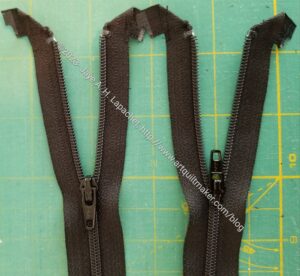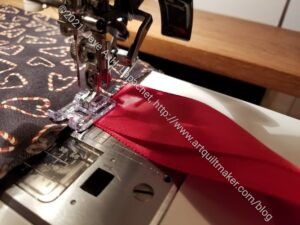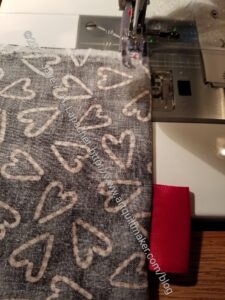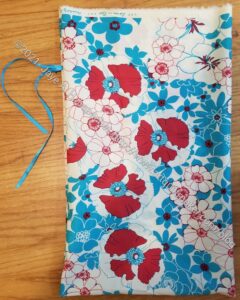 The New Quick & Easy Block Tool!: 110 Quilt Blocks in 5 Sizes with Project Ideas—Packed with Hints, Tips & Tricks by Liz Aneloski
The New Quick & Easy Block Tool!: 110 Quilt Blocks in 5 Sizes with Project Ideas—Packed with Hints, Tips & Tricks by Liz Aneloski
This book is the same format and style as the book I reviewed a few weeks ago, The New Ladies’ Art Company Quick & Easy Block Tool: 110 Quilt Blocks in 5 Sizes with Project Ideas.
This book starts off, after the table of contents, with directions on how to use the Block Charts (pg.4). The page includes a chart key giving readers tips on reading and using the various included charts, especially those that tell makers how sew each block. Quiltmakers are able to use this book in a similar manner to Around the Block, a favorite block book, which is now out of print.
Block Index by Name (pg.5-7) shows all the blocks included in this book. It is arranged by name. While the blocks in the other book weren’t unknown, the blocks in this book are more familiar. There are a lot of basket blocks as well as quiltmaking standards like Dutchman’s Puzzle, Flying Geese, Friendship Star, 9 Patch, Ohio Star, Pinwheel, Shoofly and many others. The authors include a Snowball block, which is a great alternate block to create secondary designs.
The author or editors have colored the block examples so readers can get an idea of how they will look. Remember to try placing colors in different places for a variety of looks. This allows makers to perfect their piecing by using the same pattern over and over to achieve different looks.
The Grid Number Index (pg.8-10) shows blocks together when they are based on the same grid, such as 2 Grid (Four Patch), 3 Grid (9 Patch), etc. This list helps quiltmakers combine different blocks to create interesting secondary designs. Block grids help with construction and also putting blocks together in your own design. This section includes 2,3,4, 6 and 8 grid blocks. 6 and 8 grid blocks are great to blow up into really large elements. They often have more pieces so the design look good enlarged. The large size also makes them easier to piece. Grids are also shown on each block page.
The concept of grids isn’t explained very well, though there is space on the first page of the section, so the authors could add it. I refer you to Jinny Beyer’s The Quilter’s Album of Patchwork Patterns. Ms. Beyer provides detailed explanations about girds in quiltmaking and lists of blocks and the grids to which they belong. It’s a good start to learning about grids as it helps with understanding some of the math of quilt blocks. We don’t always get that information when we just use patterns.
To help readers who use and enjoy pre-cuts, a “Precut Friendly Index” (pg.11) is provided. This information provides a baseline to terms and sizes used in the book. Great idea! The terms and sizes are followed by lists of blocks suitable for the various pre-cut sizes. For example, charm squares (5 in. x 5 in.) can be used for Dutch Rose and Maple Leaf blocks while fat quarters can be used for Starshine and Union Square B. Remember: yardage can be used for all blocks. You don’t need pre-cuts to be successful. You can also make your own pre-cuts by cutting the relevant size off the yardage.
Block making instructions start on page 13 with Air Castle. Included on each block’s page is a wealth of information. Not only do readers find the name and a list of cutting instructions, but the grid, design options, a piecing chart, yardage for a quilt and written instructions. Note that yardage for only one size quilt is given. That varies depending on the block pattern. Some sizes given enable you to make baby quilts, while other blocks have lap quilt sizes included. Readers can extrapolate out for larger sizes.
The Design Options are the best part of this book. The options provided are a great way to use the blocks or a great jumping off point for your own designs. It is also a great way to see how blocks work together. Readers can also see how a block, when combined with others can look more complex. It is a good way to get an understanding of how relatively simple blocks look different and more complex when put together.
Aztec Jewel (pg.17) would be a great block if readers want to show off a variety of fabrics. Further fussy cutting motifs from some of your special fabrics would work well with this block. The example shows two different fabric placement methods.
I am a sucker for basket blocks and, as mentioned, there are several in this book, starting with Baby Bunting (pg.18). I would have liked the design options better if they had showed some designs with different basket blocks, like in a sampler. I know, however, that the authors had to focus and that is beyond the scope of the book.
Readers could combine the different basket blocks to make their own scrappy basket quilt. Baskets included in this volume are Basket A (pg.20), Basket B/Cake Stand (pg.21), Basket C (pg.22), Basket D (pg.23), Basket E (pg.24), Basket F/ Flower Basket (pg.25), Basket G (pg.26) and H/Cherry Basket (pg.27).
The design options given for these baskets are not that interesting, but they can start off your design inspiration. For some reason, this group of basket blocks reminds me of Laura Nownes’ Going to Market pattern. The Going to Market pattern does not look like these baskets at all, but you can get some inspiration from it.
Cats & Mice (pg.32) reminds me of a tile floor. In looking at the design option, I am tempted to reduce the amount of piecing to enhance the star motif. I can see, when just looking at the block, that it might be difficult, but the edge triangles could be cut from a QST.
Despite the name, I am interested in the Country Farm block (pg.37). I am not sure I have seen it before, but I don’t pay much attention to frame blocks as a general rule. I think it looks like the background is in the center. It might be a difficult block to use with such a large open space in the center, but it would be another block to use for showcasing large motifs you fussy to size. I think it would be worth playing with the block. It reminds me of Ocean Waves (pg.76) and could possibly be put together in a similar manner with some thought.
Millstone (pg.68) shows a quilt that looks really cool because the blocks are combined. I think the background gives a little visual space so that the individual blocks can shine.
Old Maid’s Puzzle (pg.78) is very traditional. It is often seen in sampler quilts as it uses a variety of QSTs and HSTs. They way they have put 4 blocks together in the design options really makes the block really interesting. I have never been excited in this block until I saw the design in this book. Granted, I have never played with it either.
The design for Paradox (pg.81) looks like a continuous design. by that I mean one block flows into the other. Readers could make a lovely braided design by coloring multiple blocks carefully. For example, using ombre fabrics or carefully placing pieces from carefully gradated fabrics. Using the color wheel and placing the fabrics in ROYGBIV order would be gorgeous. A light to dark arrangement would be striking as well.
This book does not leave beginners out. There are easy blocks in multiple of sizes such as Rail Fence (pg.84). Readers could use a layer cake with this block design very easily, though the pre-cut friendly note says to use Jelly Roll strips.
I am enamored with Jacob’s Ladder type blocks at the moment. There are several different versions in this volume, such as Road to Heaven (pg.90) and Road to Oklahoma (pg.91)
Rolling Stone (pg.92) and Single Wedding Ring (pg. 97) are, essentially, the same block. They are colored differently and the design options look different. This is something that interests me about quilt blocks. People seem to think that putting fabric or contrast in a different place means the block can be renamed. I don’t really agree, though I can see the reasoning in that opinion. In this book, I am a little disappointed in the authors, because they could have added a completely different block and given readers another, completely different block with which to play.
I am sure you have seen the 16 patch donation blocks I make for my guild. I have tried, in different ways, to show guild members different design options with this block. When I saw the Star of Sedona (pg.104) I saw the 16 patch in the middle of the block right away. I immediately thought of adding a border of squares and HSTs to some blocks I haven’t yet handed in. This would throw the community giving team for a loop, but would make the blocks more interesting and larger. The color/ fabric placement we use in the donation blocks are incorrect for the Star of Sedona, but might work. Definitely something to try.
After the block section is finished, the author has included a section called Tips & Helpful charts (pg.123-128). As the title indicates, this is a useful section. I recommend you mark and keep it in mind for later. It will be useful to know that there are tips on cutting different shapes (pg.123) and also information on how to sew various shapes (pg.124).
The ‘Grids’ paragraph (pg.123) is too short, but useful. It is a good start, or additional information, on being able to look at a block or quilt and figure out the block or the piecing.
The authors say, in the ‘Create New Blocks’ paragraph, “Create more complex blocks by repeating and rearranging simpler blocks in groups of four or nine.” (pg.123). Keep in mind that if you choose blocks with the same grid, your quilt will look more cohesive. Of course, that needs to be the look you want. There is value in trying a variety of blocks together.
The ‘Corner Alignment for Piecing Shapes’ (pg. 125) is from Alex Anderson’s Simply Stars book and is one of the most useful charts around. Use this chart to ensure you are lining up your triangles the correct way for the best piecing outcome.
Find information on yardage (pg.126), sizes for on point designs (pg.126) and a chart for changing block sizes (pg.127).
Piecing blocks is a great way to hone your sewing skills. This book can support that as well as a desire to step away from patterns and create your own quilt designs. Piecing blocks is also a great way to get your sewjo back. Blocks can always be donated to a community giving project after you have moved on.




































